|
The last LaGGs
I-105 and I-105-2
By Massimo Tessitori
|
File updated on July 2, 2018
In 1943, the Design Bureau led by Vladimir P. Gorbunov created a further update
of the original LaGG-3, still in production in its lightened form at Zavod 31
in Tbilisi.
I-105
The first prototype of I-105 (I for Istrebitel, fighter) was built in May 1943.
Compared to late production LaGG-2 (series 70) the new plane featured:
- the back of the fuselage was lowered behind the canopy, in a way that resembles
(but was not identical) to what made by Zavod 21 on La-5F and FN;
- the oil cooler was moved from under the nose, that became more streamlined,
divided into two sub-units and located under/aside the cockpit; the air entered
from two thin protruding intakes under the fuselage, and came out from two
outlets, one on each fuselage side;
- the water cooler fairing was modified, changing a bit the lower profile
of the fuselage;
- the wing slats were deleted;
- the position lights were moved on the leading edges as on Yaks;
- the hydraulic system actuating the landing gear and the flaps was replaced
by a pnematic one;
- the tailwheel was fully retractable, with flush doors;
- the main landing gear had widened doors; it is likely that the shape of
the bay was modified too;
- the slats were suppressed;
- the radio antenna was buried in the fuselage;
- the bomb racks were deleted;
- the slot of the syncronized UBS was modified;
- the trim tab of the rudder was splitted, part above the position light,
part below;
- the gross weight was reduced to 2749 kg.
The test flight were satisfying, showing an increase of speed of 25 km/h compared
to productio LaGG-3s of May 1943, a good turning time of 16 seconds, a climb
time to 5000 m of 4.7 minutes and no troubles in handling.
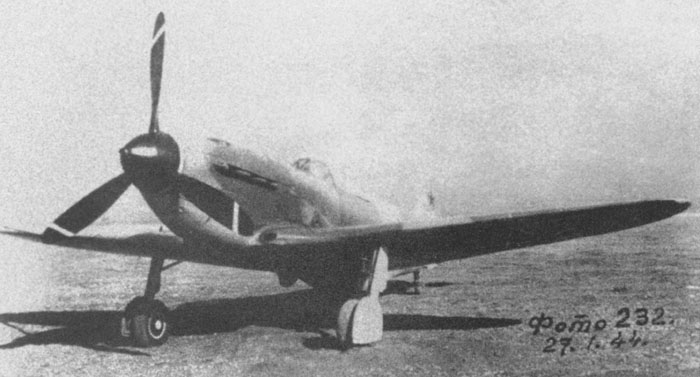 |
Aside:
image of the first prototype I-105 taken on January 1944, much after
its maiden flight in May 1943. .
Note that the windshield, the engine and the 4-tubes exhaust stakes were
the same of production LaGG-3s.
The black-white painting of the prop blades and of the wheel hubs is
noteworthy.
|
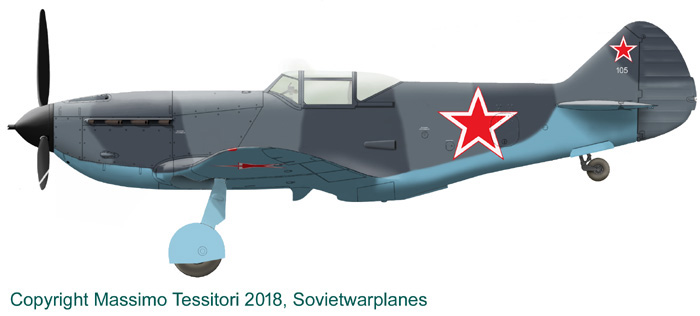 |
Profile of I-105.
The plane featured a standard grey-grey camouflage of AMT-11 and 12,
with AMT-7 blue undersurfaces. |
I 105-2
The second prototype I-105-2, had some improvements:
- the more advanced M-105PF-2 emgine, as on Yak-3;
- prop blades extended on their root to increase thrust;
- modified panelling of the nose;
- new 6-pipes exhaust stacks as on Yak-3;
- armament of one 23 mm VYa gun firing through the prop's hub (instead
of 20 mm ShVAK) and a 12,7 mm UBS (the same as I-105);
- frameless windshield as on Yak-3;
- the doors of the main landing gear were a bit reduced and were more
similar to that of standard LaGG-3s..
|
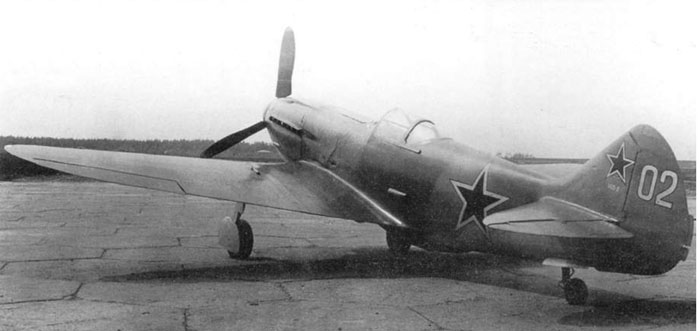 |
The image from behind shows |
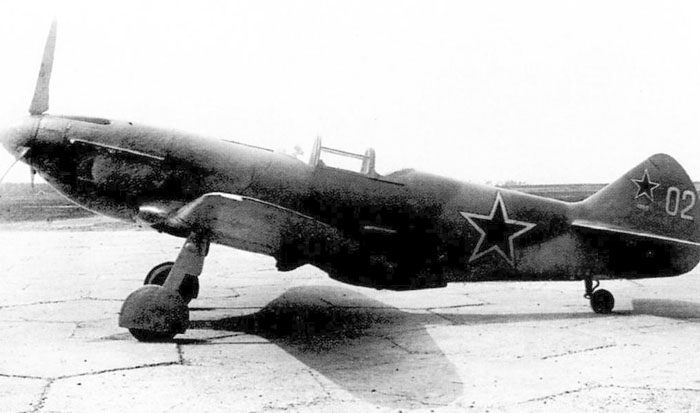 |
This image shows clearly the new profile of the fuselage, |
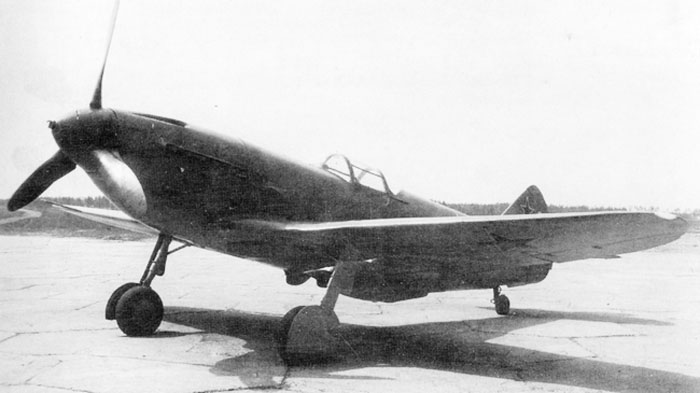
|
This image shows the small size of the stars under the wings and the
distance between the new air intakes for the oil coolers. |
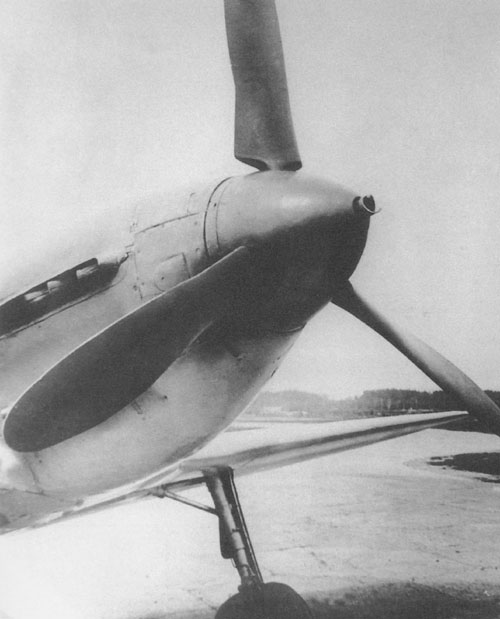 |
|
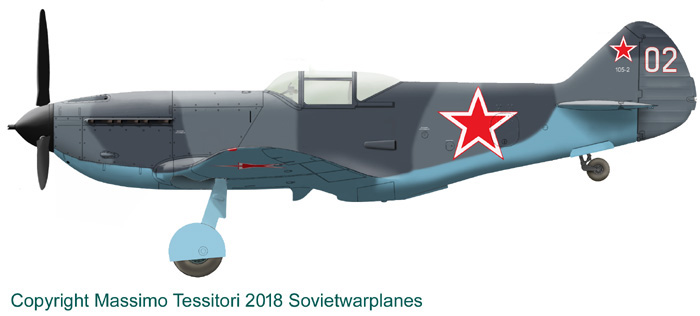 |
Profile of I-105-2.
It featured the standard grey-grey camouflage |
The prototype was ready to fly only in February 1944 because of delays, and
the state tests were made only in May-June 1944.
The state tests weren't very satisfying: the gross weight was 2875 kg, the
max speed was 554 km/h at sea level and 618 km/h at 3400 m; it reached 5000
m of altitude in 4.8 minutes.
The maximum speed could be sustained only for 3 or 4 minutes because of water
and oil overheating. These performances were inferior to those of the Yak-1M,
the prototype of Yak-3, already tested in October 1943.
The program of modernization of the LaGG-3 was deleted, and Zavod 31 in Tbilisi
was converted to the production of Yak-3s.
Disclaimer:
this work collects a lot of photos from many sources, not always identified
and mentioned.
If someone has rights on the images reproduced on this site, please don't feel
hurted, email to me and I shall provide to remove or to credit them.
massimo.tessitori(nospam)@libero.it
(remove (nospam))






